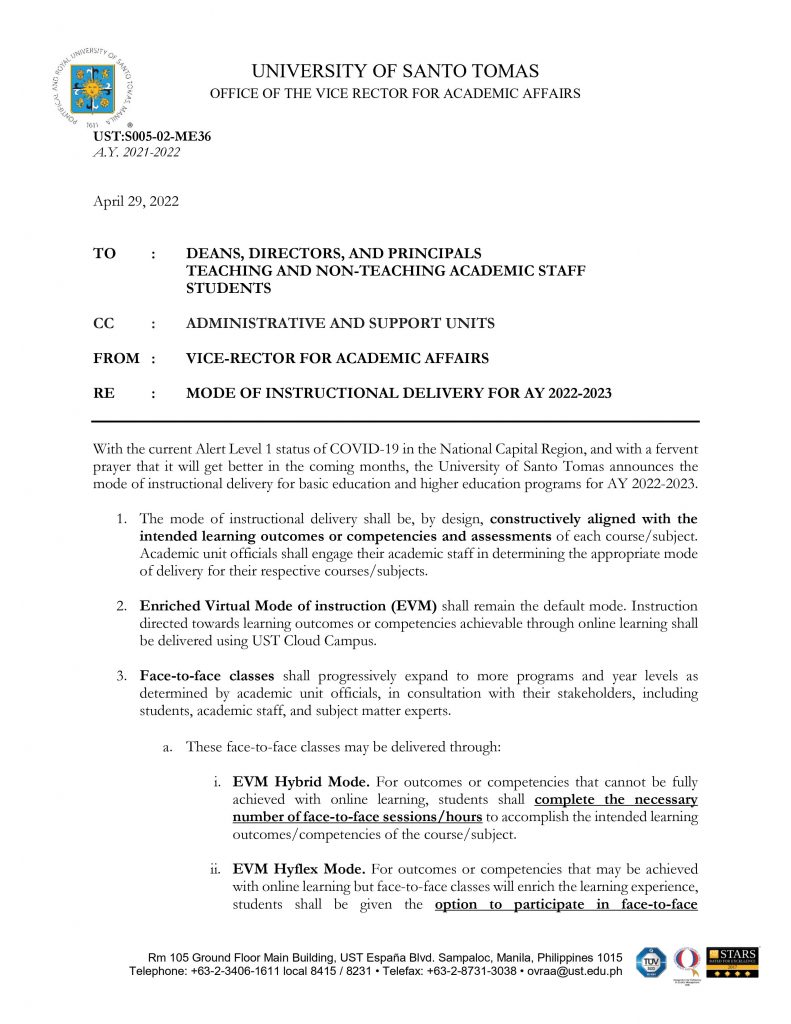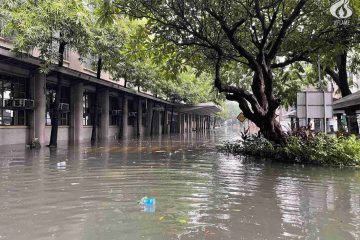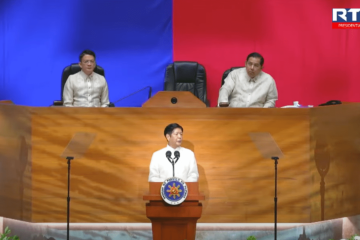
THE UNIVERSITY will continue to implement the online mode of instruction for most programs in the next academic year, despite Metro Manila being placed under the most lenient pandemic restrictions.
“Enriched Virtual Mode of instruction (EVM) shall remain the default mode. Instruction directed towards learning outcomes or competencies achievable through online learning shall be delivered using UST Cloud Campus,” the Office of the Vice-Rector for Academic Affairs (OVRAA) said in a memorandum dated April 29.
While the majority of subjects are expected to be conducted virtually, the University is still seeking to expand face-to-face classes in more programs and year levels for the academic year 2022-2023.
“Face-to-face classes shall progressively expand to more programs and year levels as determined by academic unit officials, in consultation with their stakeholders, including students, academic staff, and subject matter experts,” UST Vice-Rector for Academic Affairs Prof. Cheryl Peralta said.
Academic unit officials shall determine the “appropriate mode of delivery” for their respective courses, Peralta added.
Students disappointed
Some Artlets expressed disappointment over the University’s decision to conduct online classes for the next academic year as other establishments are permitted to operate.
Third-year communication student Aidee So deemed the current setup as an “ineffective learning environment” for most students.
“Most students I know, including myself, have been more burnt out than ever; not just with the academic load, but also the repetitive cycle of having to sit in front of your computer (or) laptop for an unhealthy amount of hours daily,” So told The Flame.
“Establishments, like malls, parks, restaurants, etc have been up and running for quite some time and people, even students, have adjusted to the new normal…which is why I cannot understand why schools cannot re-open,” she added.
Jose Gabriel Ignacio, a sophomore and incoming vice president-external of the UST Journalism Society, said online classes have hindered the students’ attainment of proper skills and competencies for their future careers.
“How do they expect to develop outstanding journalism students if they are not allowed to go outside their house to research in the real world, interview people, get into actual scenes and not just rely on live streams; and to work or at least feel the atmosphere of the actual newsroom and not just in front of our study desks?” Ignacio said in a mix of English and Filipino.
According to AB Dean Marilu Madrunio, only the journalism program had expressed intent to apply for limited face-to-face classes for its two courses, namely broadcast and photojournalism, as of March.
Third-year creative writing student Jose Vicente Francisco said other universities have already allowed in-person classes and students “cannot afford another year of online classes.”
“Other universities are opening their gates to students already… so why not open the gates for other students as well for limited face-to-face classes, too?” Francisco said, adding that in-person access to the library’s resources will help students who are working on their thesis.
Expanded F2F classes
Face-to-face classes in the University may be delivered through the enriched virtual mode hybrid and hyflex mode.
Under the hybrid mode, students must “complete the necessary number of face-to-face sessions/hours” to accomplish the intended learning goals that cannot be fully achieved through online instruction, while students have the option to participate in face-to-face classes under hyflex mode.
Programs that wish to conduct face-to-face classes must submit a proposal to the University Crisis Management Committee, as well as the concerned government agencies, the OVRAA said.
“Academic units shall render formal announcements on the implementation of face-to-face classes for their respective programs and courses for the guidance of all stakeholders,” Peralta said.
The memorandum also noted that the implementation of face-to-face classes is permitted due to Metro Manila’s Alert Level 1 status. In the event of heightened alert levels, the university will revert back to the online mode of instruction.
Some medical and health allied programs have implemented limited face-to-face classes in June last year, while four laboratory courses in the College of Tourism and Hospitality Management started last April. F – Aubrey Shane Lim






❤ Thank you Ma’am Madrunio & AB! I very much prefer online classes, contrary to my fellow students. This is good news for me. With online classes, mas nakakatipid po, mas manageable ang time since minus na ang travel time to and from school, plus it feels self-paced which gives me more control of my time. Very convenient and we even get to stay with our family more 😊❤ Again, thanks po! This news made me really happy.
Opo tama po. At ang dami dami natin na cum laude pag online class:) pag hindi ka cum laude hindi ka “in”.
Online classes specially in big universities like UST is a better choice as more parents are starting to worry about these increasing anti government recruitment for these vulnerable students that will compromise their safety. Rallies participation and uncontrolled students like in UP might even be used as recruiters to UST and other universities to encourage more participation. So it is much better for sons and daughters to stay at home.
Policy makers must provide two options: 1. Face to face, 2. Online. Parents and students will decide which option they want.
[…] The University has announced that the enriched virtual mode is still the “default mode” of learning instruction for this term. […]